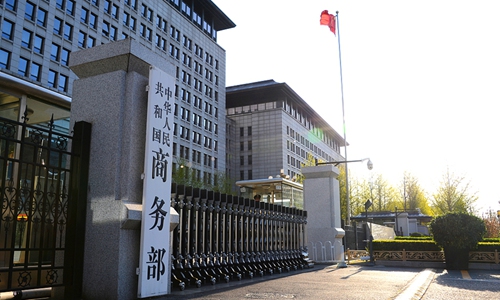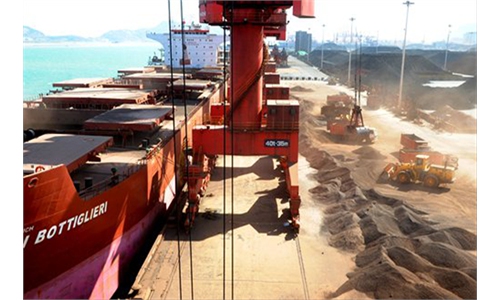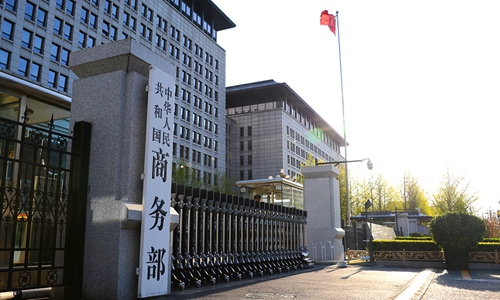China unveils draft new version of catalogue for foreign investment in ‘encouraged’ sectors

The Ministry of Commerce (MOFCOM) Photo: VCG
China on Tuesday unveiled a draft version of the "encouraged industry" catalogue for foreign investment, continuing to incentivize foreign businesses toward making commitments in manufacturing and services in the less-developed regions of the country.
The new draft catalogue to replace the existing 2020 version is meted out after the National Development and Reform Commission (NDRC) and the Ministry of Commerce (MOFCOM) solicited input from all relevant departments, business chambers and enterprises starting in November 2021, according to a statement on Tuesday that explains the revision.
The catalogue is formulated based on the Foreign Investment Law and its implementation regulations, specifying the industries, fields and regions for encouraging foreign investment. The existing version was approved in late 2020 and came into force in January 2021.
Compared with the 2020 version, the new draft adds 238 items, with 50 items added in the national list and 188 items added in the regional list tailored for Central and Western China. In addition, the draft version revises 114 items and deletes 38 items.
Among the major revisions are the addition or expansion of items regarding components, parts and equipment manufacturing as well as those concerning professional design, technology services and development, as foreign investments are encouraged toward manufacturing and services, read the statement. And, the regional list eyes updates in line with local strengths in labor, special resources and local needs for attracting investment, as foreign businesses are still being lured into investing in the central, western and northeastern parts of the country.
The NDRC and the MOFCOM are seeking public comment on the draft catalogue through June 10.
The revision indicates a continued push for attracting foreign investment in the country's less-developed regions where labor-intensive projects remain a cornerstone for job creation and the rise of local manufacturing, Bai Ming, deputy director of the International Market Research Institute at the Chinese Academy of International Trade and Economic Cooperation, told the Global Times on Tuesday.
Efforts to funnel more foreign investment into manufacturing would also boost the country's clout in global industry and supply chains, Bai said.
The expert called attention to temporary challenges facing the foreign business community amid uncertainties both in China and overseas, but noted that would by no means crimp foreign investment flows into the country.
"It's increasingly the case that multinationals base their investments on not merely the sheer size of the Chinese market, but China's rising profile in the international division of industries, factoring its complete industrial system and future industrial and consumption upgrades," he said.
In a fresh sign, France-based cosmetics giant L'Oréal on Sunday founded its first investment venture in China — Shanghai Meicifang Investment Co, which eyes opportunities in innovative beauty-related technology.
The country's foreign trade and investment got off to a stable start this year, but the pressure on stabilizing foreign trade is consistently rising while foreign investment stabilization has also faced multiple challenges, Vice Premier Hu Chunhua said at a national teleconference on trade and foreign investment on Monday.
Hu called for actions to stabilize existing foreign firms while ramping up efforts to attract investment and improve the structure of foreign investment.
Local governments across the country were urged to play an active role in strengthening services and guaranteeing mechanisms for foreign trade and investment, and helping businesses in resolving their difficulties.



